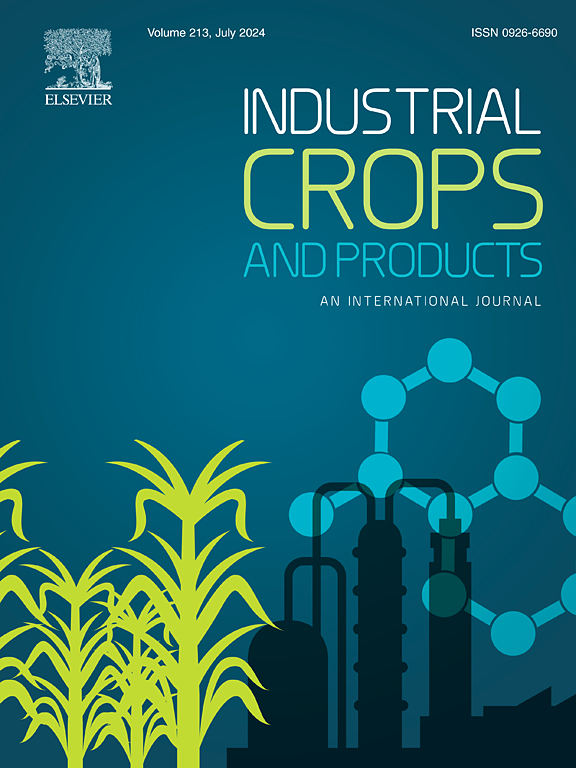Comparative analysis of innovative and conventional oil extraction techniques on yield and phytochemical profiles of Citrus aurantium L. seed oil and seed nutritional value
IF 6.2
1区 农林科学
Q1 AGRICULTURAL ENGINEERING
引用次数: 0
Abstract
Citrus aurantium L. seeds (CAS), one of the major food by-products in Iran from crops of industrial interest, were evaluated as a potential industrial oilseed for pharmaceutical and dermocosmetic applications. Three innovative extraction techniques (ultrasound-assisted extraction, pressurized solvent extraction, and a combined pressurized solvent-ultrasound-assisted method (PSUA)), were optimized to enhance oil yield. For comparison, traditional methods (Soxhlet, maceration, and cold pressing) were also conducted. The extraction yield, oil quality parameters (acidity, peroxide, iodine, and saponification values), and fatty acid (FA) composition were analyzed to assess the efficiency of each technique. Additionally, the phytosterol content and both 1H and 13C NMR profiles were examined for the oil obtained through cold pressing, along with the CAS nutritional value, antioxidant capacity, and vitamin E profile of seeds. The results demonstrated a high carbohydrate and fat content, along with notable antioxidant and vitamin E levels. The major fatty acids identified included three unsaturated (linoleic, oleic, and α-linolenic acids) and two saturated (palmitic and stearic acids) FAs. Across all extraction methods, the PSUA technique (5 min, 2 bar, at 25 °C) emerged as the most efficient, providing a higher extraction yield, shorter processing time, reduced solvent usage, and superior oil quality with a higher content of unsaturated FAs. Phytosterol analysis revealed significant levels (357.6 ± 0.48 mg/100 g oil) of compounds, such as β-sitosterol, campesterol, stigmasterol, and ∆5-avenasterol. Additionally, 1H and 13C NMR proved to be effective for FA qualitative analysis, with the 13C NMR spectrum confirming the FA chains identified in the 1H NMR analysis.

创新与传统榨油工艺对金柑籽油产量、植物化学特征及营养价值的比较分析
柑桔种子(CAS)是伊朗工业作物的主要食品副产品之一,被评价为潜在的工业油籽,可用于制药和皮肤化妆品。优化了超声辅助萃取、加压溶剂萃取和加压溶剂-超声联合萃取(PSUA)三种新型萃取技术,以提高油收率。为了比较传统的方法(索氏法、浸渍法和冷压法)。分析了提取率、油脂质量参数(酸度、过氧化物、碘和皂化值)和脂肪酸组成,以评估每种技术的效率。此外,我们还检测了通过冷压获得的油的植物甾醇含量、1H和13C NMR谱,以及种子的CAS营养价值、抗氧化能力和维生素E谱。结果表明,其碳水化合物和脂肪含量高,抗氧化剂和维生素E含量也很高。鉴定出的主要脂肪酸包括3种不饱和脂肪酸(亚油酸、油酸和α-亚麻酸)和2种饱和脂肪酸(棕榈酸和硬脂酸)。在所有的提取方法中,PSUA技术(5 min, 2 bar,在25°C下)是最有效的,它提供了更高的提取率,更短的处理时间,更少的溶剂使用,以及更高含量的不饱和脂肪酸的优质油品。植物甾醇分析显示,β-谷甾醇、油菜甾醇、豆甾醇和∆5-avenasterol等化合物的含量显著(357.6 ± 0.48 mg/100 g oil)。此外,1H和13C NMR被证明对FA定性分析是有效的,13C NMR谱证实了1H NMR分析中鉴定的FA链。
本文章由计算机程序翻译,如有差异,请以英文原文为准。
求助全文
约1分钟内获得全文
求助全文
来源期刊

Industrial Crops and Products
农林科学-农业工程
CiteScore
9.50
自引率
8.50%
发文量
1518
审稿时长
43 days
期刊介绍:
Industrial Crops and Products is an International Journal publishing academic and industrial research on industrial (defined as non-food/non-feed) crops and products. Papers concern both crop-oriented and bio-based materials from crops-oriented research, and should be of interest to an international audience, hypothesis driven, and where comparisons are made statistics performed.
 求助内容:
求助内容: 应助结果提醒方式:
应助结果提醒方式:


